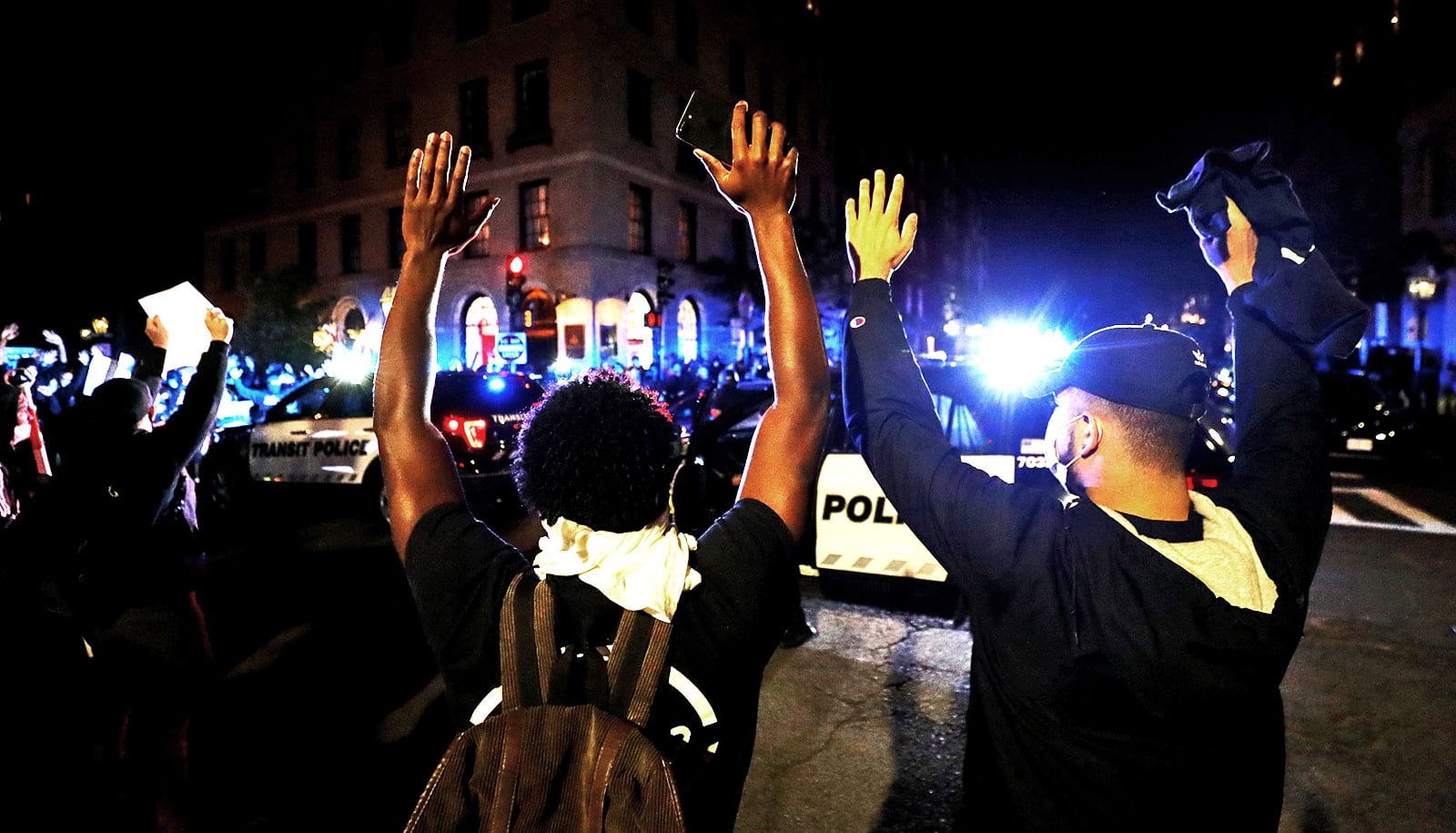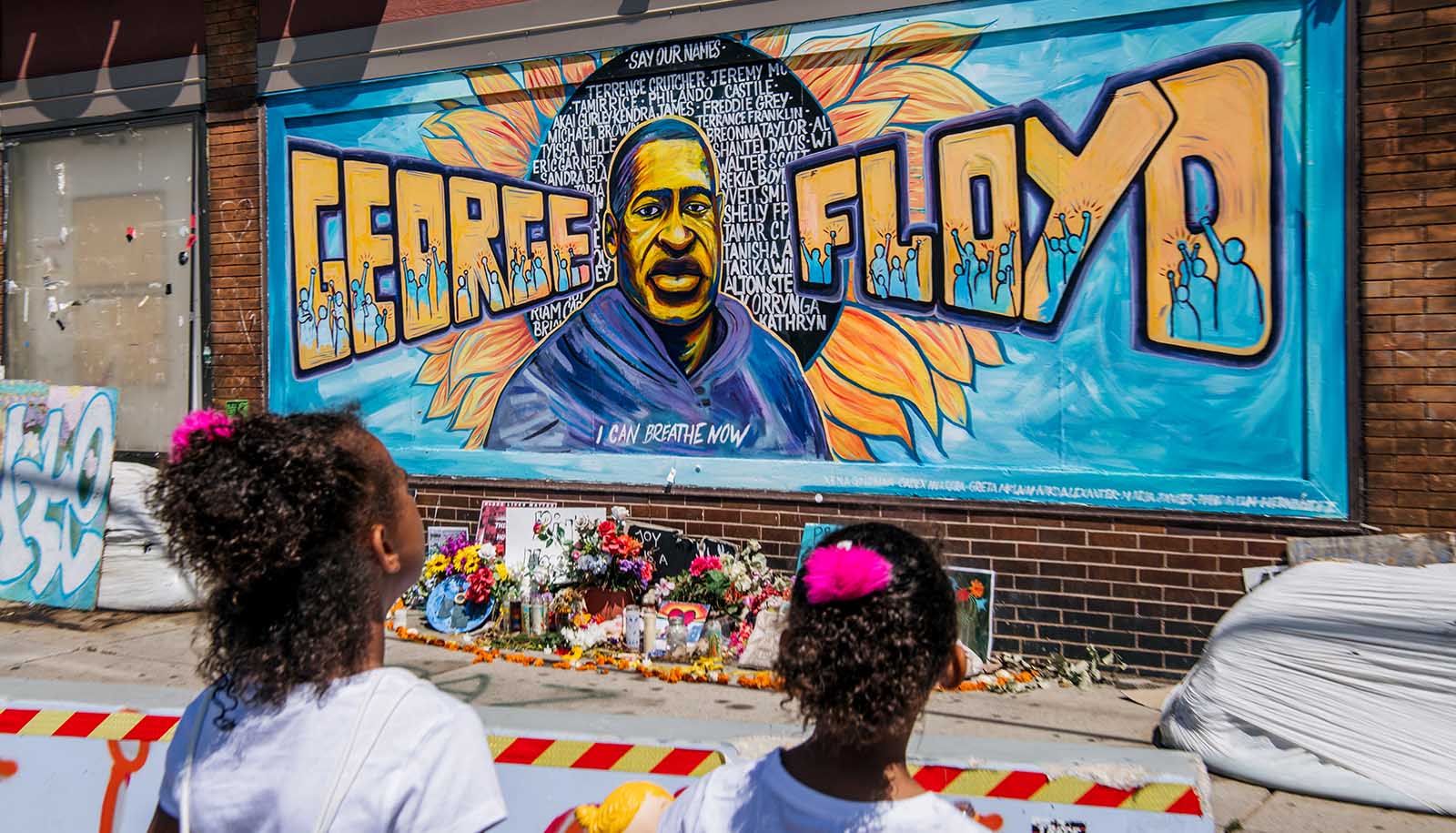New research suggests that changes in police agency educational requirements could save lives.
The study is unique because it’s one of the first studies to explore the nexus of officer education and victim race, says Thad Johnson, assistant professor of criminology at Georgia State University.
Repeated incidents of deadly officer-involved shootings have sparked both outrage and protests across the US over the past several years. What many of these incidents share in common is the race of the victim and the fact that they were unarmed.
According to the Washington Post, more than 1,000 people have been shot and killed by police in the past year, and the rate at which Black Americans are killed by police is more than twice as high as the rate for their white counterparts.
“Until now, investigations of racial differences regarding the education level of officers on police-caused fatalities have been virtually nonexistent,” Johnson explains.
In the new study published in the Journal of Police and Criminal Psychology, Johnson and his colleagues looked at data from multiple law enforcement databases from 235 large US cities between 2000 and 2016. They found that college degree requirements are linked to significant reductions in police-related fatalities involving Black and unarmed citizens. The work suggests that mandating at least an associate degree for entry-level officers could lower the number of Black people killed by police by as much as three times.
Here, Johnson shares insight into his work, including the changes he believes are necessary to bring about a more equitable justice system:
Why do you think there is such a strong correlation between officer education and police-related fatalities?
There may be a couple of reasons for the findings observed in this study, with the most straightforward explanation being that college degree requirements likely affect PRF rates (police-related fatalities) through their effect on the force’s composition. We reason those police departments composed of college-degreed officers with certain qualities (motivation, self-discipline, general intelligence)… and certain characteristics (civility, urbanity, self-control) can effectively govern while minimizing the loss of life and harm to communities.
Prior research shows that college-educated officers place greater value on ethical behavior and are more risk aversive. Moreover, research demonstrates that college enhances foresight and communication and problem-solving skills helpful in avoiding deadly confrontations.
How does your background in law enforcement inform your work?
It provides me with a more balanced and thoughtful perspective regarding these complex issues. I can understand the perspective of officers and definitely the perspective of a group that has borne the historical brunt of criminal justice practices and community violence. I believe our work lays out the complexities of public safety in both a practical and humane sense. We tend not to focus on police officers or criminal justice actors as scapegoats because officer behavior does not occur in a vacuum. In fact, most officers are policy and culture compliant and tend to govern themselves accordingly. That’s why we focus on how leaders, laws, systems, policies, operations, and socioeconomic factors coalesce to produce both individual and agency outcomes.
My law enforcement experience also helps me maintain both a quantitative and qualitative lens in my research approach. Meaning that just because something is not measurable statistically does not make it irrelevant to how we think about studying phenomena.
You didn’t initially set out to focus on this type of research. Can you share how you were drawn in and what it has meant to your career?
I was always torn about my experiences as a police officer. As a Black man growing up in the South, we were taught to fear police, be respectful and keep it moving because of our nation’s ugly history of deploying the police and other government resources as a tool of oppression. Not to mention the personal and vicarious experiences of being a Black male from an urban area. I never really felt an overwhelming sense of pride about wearing the uniform. And truthfully, I’m still conflicted but appreciate all of my experiences. I wanted to get away from policing and focus on disproportionate disciplinary practices in K-12 schools. But after coming to Georgia State and meeting Richard Wright, then working with my wife, Natasha Johnson, as well as Bill Sabol, Eric Sevigny, and other faculty, I embraced this research and my past experiences. As such, I’ve been able to help impact policy and guide conversations about creating a more equitable, safe, and efficient justice system.
Another of your recent research projects found significantly higher arrest rates for Black citizens and lower arrest rates for white citizens when using facial recognition technology. Some state and local governments including Boston and San Francisco have even banned the use of facial recognition technology over these issues. What are some of the concerns your findings raise?
Police deployment of facial recognition technologies (FRT) contributes to greater racial disparity in arrests, according to our recent peer-reviewed study in Government Information Quarterly. This troubling racial imbalance reflects this technology’s association with higher Black arrest rates and lower arrest rates for white citizens.
In principle, this artificial intelligence-powered innovation should help facilitate crime detection and offender apprehension more efficiently and fairly. Far too often, police officers conduct FRT-assisted searches without proper training, supervision, or scientific guidance. Yet, despite its promise, FRT’s reported inaccuracies in identifying demographic groups, coupled with AI technologies’ threat of automating officer discretion, leave open questions about its suitability for law enforcement.
We can only speculate on the factors behind our study findings. But we reason they most likely reflect a nexus of factors, including uneven police deployment in Black neighborhoods, work conditions ripe for cognitive shortcuts, the automating effects of AI technologies on officer decision-making, and intensified enforcement activity associated with police technologies.
More importantly, our study shows that law enforcement and technology are interconnected with broader social forces, suggesting that interactions and outcomes are seen to be mutually dependent, integrative, and co-evolving over time. In other words, if racial disparities already exist in police agency operations and enforcement outcomes related to organizational or structural factors, police applications of FRT threaten to codify and worsen these inequities.
Do you think research such as yours can move the needle on important issues of equity and criminal justice?
The goal of this work is for leaders and citizens to think more clearly about justice decisions. Simply hiring college-educated officers is not a magic bullet. Instead, we must be thoughtful in considering the full spectrum of implications associated with policy changes. I think this paper, along with findings from my other works help shift our thinking about policy decisions or reform decisions. It also helps educate readers on how policy works and the potential unintended consequences of well-intentioned policy and practice. Our work also points out the limitations of the justice system in improving many of the equity and efficiency challenges through agency-level reform efforts.
There are clear connections between education policy and criminal justice. Can you share a bit about how they are interconnected?
I believe education policy and practice in the K-20+ system impacts criminal justice in two broad ways. First, educational attainment serves as a protective factor against crime and delinquency. Second, more educated professionals tend to be more productive than other workers. Other works show that education is associated with moral reasoning development, better problem-solving skills and more progressive attitudes towards marginalized groups.
If this is the case, then what we teach and how we serve our students can have a profound impact on various justice and social outcomes. Do our lesson plans build in social justice lessons and help hone students’ equity lens? Do policies and teacher evaluations focus sharply on test scores or student growth in problem solving and comprehension? These are a few questions highlighting the importance of education policy and practice in the U.S.
What are some of the most important changes that you think need to happen to bring about a more equitable justice system in the US?
Two major things need to happen. First, the justice system is based on winning. Police are judged by metrics like arrests and prosecutors by their win percentage. The emphasis on these outcomes in incentives structures force actors to treat citizens as commodities rather than co-producers of community solutions.
Second, our systems can only be as just as the society in which it operates. If racial disparities and evidence of ‘-isms’ exist at every level of our society—things like health care, education, wealth, homeownership, mobility, and more—we cannot expect our criminal justice systems to be immune from these forces. Creating a more equitable society and providing equitable opportunities for success in the US is the ultimate intervention needed for a more equitable justice system.
Source: Georgia State University



